The beneficial effects of chick embryo extract preconditioning on hair follicle stem cells: A promising strategy to generate Schwann cells
- PMID: 36631409
- PMCID: PMC10334277
- DOI: 10.1111/cpr.13397
The beneficial effects of chick embryo extract preconditioning on hair follicle stem cells: A promising strategy to generate Schwann cells
Abstract
The beneficial effects of hair follicle stem cells in different animal models of nervous system conditions have been extensively studied. While chick embryo extract (CEE) has been used as a growth medium supplement for these stem cells, this is the first study to show the effect of CEE on them. The rat hair follicle stem cells were isolated and supplemented with 10% fetal bovine serum plus 10% CEE. The migration rate, proliferative capacity and multipotency were evaluated along with morphometric alteration and differentiation direction. The proteome analysis of CEE content identified effective factors of CEE that probably regulate fate and function of stem cells. The CEE enhances the migration rate of stem cells from explanted bulges as well as their proliferation, likely due to activation of AP-1 and translationally controlled tumour protein (TCTP) by thioredoxin found in CEE. The increased length of outgrowth may be the result of cyclic AMP response element binding protein (CREB) phosphorylation triggered by active CamKII contained in CEE. Further, CEE supplementation upregulates the expression of vascular endothelial growth factor (VEGF), brain-derived neurotrophic factor and glial cell line-derived neurotrophic factor. The elevated expression of target genes and proteins may be due to CREB, AP-1 and c-Myc activation in these stem cells. Given the increased transcript levels of neurotrophins, VEGF, and the expression of PDGFR-α, S100B, MBP and SOX-10 protein, it is possible that CEE promotes the fate of these stem cells towards Schwann cells.
© 2023 The Authors. Cell Proliferation published by Beijing Institute for Stem Cell and Regenerative Medicine and John Wiley & Sons Ltd.
Conflict of interest statement
The authors declare that they have no competing interests.
Figures
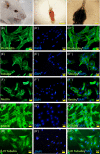
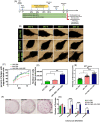

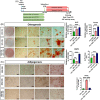
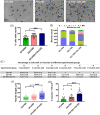
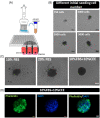


Similar articles
-
Directing Rat Hair Follicle Stem Cells Toward Neuronal Lineage With Enhanced Trophic Factor Expression.Adv Biomed Res. 2024 Sep 23;13:84. doi: 10.4103/abr.abr_111_24. eCollection 2024. Adv Biomed Res. 2024. PMID: 39512401 Free PMC article.
-
VEGF165 induces differentiation of hair follicle stem cells into endothelial cells and plays a role in in vivo angiogenesis.J Cell Mol Med. 2017 Aug;21(8):1593-1604. doi: 10.1111/jcmm.13089. Epub 2017 Feb 28. J Cell Mol Med. 2017. PMID: 28244687 Free PMC article.
-
The neuron-glia signal beta neuregulin induces sustained CREB phosphorylation on Ser-133 in cultured rat Schwann cells.Mol Cell Neurosci. 1998 Apr;10(5-6):309-22. doi: 10.1006/mcne.1998.0662. Mol Cell Neurosci. 1998. PMID: 9604209
-
[Phenotypic plasticity of neural crest-derived melanocytes and Schwann cells].Biol Aujourdhui. 2011;205(1):53-61. doi: 10.1051/jbio/2011008. Epub 2011 Apr 19. Biol Aujourdhui. 2011. PMID: 21501576 Review. French.
-
The pluripotency of hair follicle stem cells.Cell Cycle. 2006 Feb;5(3):232-3. doi: 10.4161/cc.5.3.2397. Epub 2006 Feb 9. Cell Cycle. 2006. PMID: 16410728 Review.
Cited by
-
Hair follicle stem cell-derived secretome protects astrocytes in an in vitro ischemia/reperfusion model.Anat Cell Biol. 2025 Jun 30;58(2):264-273. doi: 10.5115/acb.24.213. Epub 2025 Mar 18. Anat Cell Biol. 2025. PMID: 40097261 Free PMC article.
-
Valproic acid and/or rapamycin preconditioning protects hair follicle stem cells from oxygen glucose serum deprivation-induced oxidative injury via activating Nrf2 pathway.Mol Biol Res Commun. 2024;13(3):103-116. doi: 10.22099/mbrc.2024.49302.1922. Mol Biol Res Commun. 2024. PMID: 38915453 Free PMC article.
-
Isolation and Characterization of Extracellular Vesicles of Chick Embryo Blood.Cell Biochem Biophys. 2024 Sep;82(3):2465-2471. doi: 10.1007/s12013-024-01357-y. Epub 2024 Jun 18. Cell Biochem Biophys. 2024. PMID: 38888872
-
Hypoxic Preconditioning Prevents Oxidative Stress-Induced Cell Death in Human Hair Follicle Stem Cells.Iran J Biotechnol. 2024 Jul 1;22(3):e3888. doi: 10.30498/ijb.2024.447077.3888. eCollection 2024 Jul. Iran J Biotechnol. 2024. PMID: 39737203 Free PMC article.
-
Directing Rat Hair Follicle Stem Cells Toward Neuronal Lineage With Enhanced Trophic Factor Expression.Adv Biomed Res. 2024 Sep 23;13:84. doi: 10.4103/abr.abr_111_24. eCollection 2024. Adv Biomed Res. 2024. PMID: 39512401 Free PMC article.
References
-
- Sieber‐Blum M, Hu Y. Epidermal neural crest stem cells (EPI‐NCSC) and pluripotency. Stem Cell Rev. 2008;4(4):256‐260. - PubMed
MeSH terms
Substances
Grants and funding
LinkOut - more resources
Full Text Sources
Miscellaneous

